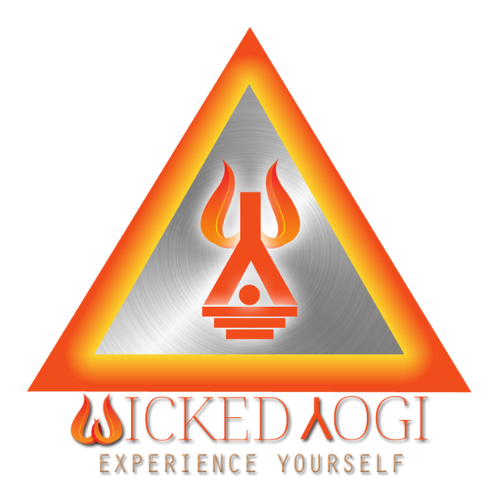In the pursuit of spiritual growth and the quest to alleviate suffering, countless individuals turn to age-old practices such as meditation, yearning for solace and enlightenment. However, it is of utmost importance to recognize that while meditation, when practiced correctly, can indeed be a valuable tool, it is by no means a universal panacea for the myriad afflictions that plague the human condition. Many traditional meditation practices were born in historical contexts far removed from the complexities and challenges of modern life, and their efficacy in addressing the fundamental roots of our suffering may not merely be limited; in truth, in numerous cases, these practices may even yield adverse consequences, exacerbating our state from one of distress to one of even greater anguish.
It is crucial to understand that the majority of practices in which people engage offer only a fleeting and illusory sense of relief. Individuals may initially experience a sense of well-being, only to find themselves once again ensnared in the same web of suffering as the transient effects dissipate. This phenomenon can be attributed to the fact that many of these practices were conceived during eras of genuine human suffering, frequently as a means to numb the mind and provide a temporary respite from the unforgiving realities of existence. Throughout the annals of history, humans have grappled with the question of why they must endure suffering, yet no one has successfully identified the true origins of this affliction or offered effective remedies.
Fascinatingly, numerous meditation practices were devised either at the behest of monarchs or by those who had been directly or indirectly impacted by the brutality of rulers. These practices often incorporated techniques such as rapid breathing, which can induce a state of hyperventilation. During inhalation, the brain receives an influx of oxygen, while exhalation leads to a decrease in oxygen levels within the brain. Rapid breathing, or hyperventilation, has the potential to diminish carbon dioxide levels, triggering a constriction of the blood vessels that supply the brain with vital nutrients and oxygen. This reduction in cerebral blood flow can manifest in symptoms such as lightheadedness and a tingling sensation in the extremities. Many individuals erroneously attribute these sensations to spiritual experiences, when in actuality, they are simply the byproduct of altered brain chemistry.
"It is of utmost importance to recognize that while meditation, when practiced correctly, can indeed be a valuable tool, it is by no means a universal panacea for the myriad afflictions that plague the human condition."
Yet, it would be a grave misconception to dismiss the profound benefits that meditation can offer when practiced with skill and understanding. The key lies in discerning the true purpose of meditation and selecting the appropriate techniques to achieve that purpose. When approached with clarity and intention, meditation has the power to train the mind, quieting the ceaseless chatter of thoughts, quelling the turbulent fluctuations of emotion, and cultivating a deep sense of focus and concentration. It is essential to engage in meditation with a clear vision of one's goals and to adopt practices that are tailored to one's unique needs and aspirations.
Therefore, it is crucial that we do not fall into the trap of believing in one-size-fits-all solutions or quick fixes. Instead, we must approach our spiritual growth with discernment, wisdom, and a willingness to engage in honest introspection. By examining our own thoughts, beliefs, and patterns of behavior, we can begin to identify the root causes of our suffering and take meaningful steps towards transformation.
Consider the case of an individual who has experienced a painful breakup or the loss of a job they deeply valued. While these experiences are undeniably difficult and can cause genuine distress, it is essential to differentiate between the real pain of the experience and the imagined suffering that can arise when we allow these events to define us as victims. When we become trapped in a mindset of victimhood, we may find ourselves mired in self-pity, pointing fingers at others for our misfortune, and feeling helpless to change our circumstances. We may seek out the sympathy and validation of friends and loved ones, finding temporary solace in their commiseration, but this validation can ultimately become a double-edged sword.
"We must approach our spiritual growth with discernment, wisdom, and a willingness to engage in honest introspection.”
When we become reliant on the sympathy of others to cope with our perceived suffering, we may feel justified in our victimhood and less motivated to take proactive steps to change our situation. This dependence on external support can hinder our progress and keep us stuck in a cycle of imagined suffering, preventing us from engaging in the necessary self-reflection and personal growth. To break free from this cycle, we must be willing to relinquish our attachment to victimhood and take ownership of our own healing and growth. This does not mean minimizing or denying the very real pain and distress we may have experienced, but rather recognizing that we have the power to choose how we respond to these experiences and consciously differentiate between the genuine pain of the event and the imagined suffering we create through our own perceptions and beliefs.
It is important to recognize that the concept of suffering, as it is often understood today, may differ significantly from the suffering experienced by our ancestors when the term was first coined and enshrined in our religious texts. In ancient times, our forebears faced unimaginable hardships, from the constant threat of famine and disease to the brutality of warfare and oppression. The suffering they endured was often a matter of life and death, a daily struggle for survival in a world that was harsh and unforgiving. This is what constitutes real suffering.
In contrast, the challenges we face in the modern world, while undoubtedly difficult, rarely rise to the level of existential threat. We may struggle with financial insecurity, relationship problems, or a sense of unfulfillment in our careers, but these struggles, while certainly painful, do not typically threaten our immediate survival. These challenges, although distressing, fall under the category of imagined suffering. Moreover, the concept of suffering has been further complicated by the ways in which it is often used in contemporary discourse, applied to everything from minor inconveniences to genuine tragedies. This overuse of the term can have the effect of diminishing its impact and obscuring its true meaning.
"When we become reliant on the sympathy of others to cope with our perceived suffering, we may feel justified in our victimhood and less motivated to take proactive steps to change our situation.”
The apparent absence of divine intervention amidst our darkest trials provokes a vexing conundrum: if the deities we venerate are both omnipotent and benevolent, why then do they permit the existence of such profound anguish? A potential resolution to this seeming paradox lies in acknowledging that the divine is not a discrete, autonomous entity, but rather the quintessence of our very being. We are not mere marionettes, our strings pulled by the capricious whims of fate, but rather active architects of our own destinies. The gods we summon are the loftiest aspirations of our own consciousness, the sublime ideals we endeavor to personify and manifest in the world around us. By recognizing the divine as an integral part of our own being, we empower ourselves to transform our lives and create a reality that aligns with our highest values and aspirations.
The concept of spiritual action is paramount in transforming our perceived suffering into a catalyst for growth and transformation. By aligning our thoughts, words, and deeds with our highest aspirations and values, we can utilize our pain as a source of motivation, propelling us forward on the path of personal growth and self-improvement. However, this transformation does not occur through passive contemplation alone; it requires a willingness to take decisive action and embody the insights and realizations that arise through our self-inquiry. Spiritual action is the practice of living in integrity with our true nature, committing ourselves to be a force for good in the world. This can manifest through the act of conscious creation, whereby we set clear intentions for the reality we wish to create and take tangible steps to bring those intentions to fruition. Another powerful practice is that of service and compassion, recognizing the divine spark within ourselves and others, and acting in ways that alleviate real suffering, not merely imagined suffering born of our own perceptions and beliefs.
As an enlightened yogi and holistic Guru, my role is to guide and support individuals on this journey, offering tools and practices for cultivating self-awareness, inner peace, and spiritual realization. However, I recognize that the ultimate goal of this journey is not to become dependent on external guidance, but to discover the inner guru that lies within each of us. This inner guru is the voice of our own highest wisdom and truth. It is the part of us that knows, beyond a shadow of a doubt, that we are divine beings, worthy of love, respect, and compassion. It is the part of us that sees the world through the eyes of unity and interconnectedness, recognizing the sacred in all things.
"A potential resolution to this seeming paradox lies in acknowledging that the divine is not a discrete, autonomous entity, but rather the quintessence of our very being.”
By engaging in the practices of honest introspection and spiritual action, we begin to cultivate a deeper relationship with this inner guru. We learn to trust its guidance and wisdom and to align our lives with its highest aspirations. We become more attuned to the subtle promptings of our own intuition and more willing to act on them, even in the face of fear or uncertainty. Ultimately, the journey of spiritual growth and self-realization is a journey of remembering who we truly are. It is a journey of stripping away the layers of conditioning and limitation that have obscured our true nature and coming home to the divine essence that lies at the core of our being.
So let us approach this journey with courage, compassion, and a deep commitment to our own growth and evolution. Let us engage in the practices of honest introspection and spiritual action, trusting in the guidance of our inner guru and the wisdom of our own highest truth. And let us never forget that the divine is not some distant, external force, but a power that lies within each of us, waiting to be expressed through our every thought, word, and deed. By embracing this truth and living it fully, we can transform ourselves and the world around us, creating a reality that is more just, compassionate, and loving for all.




